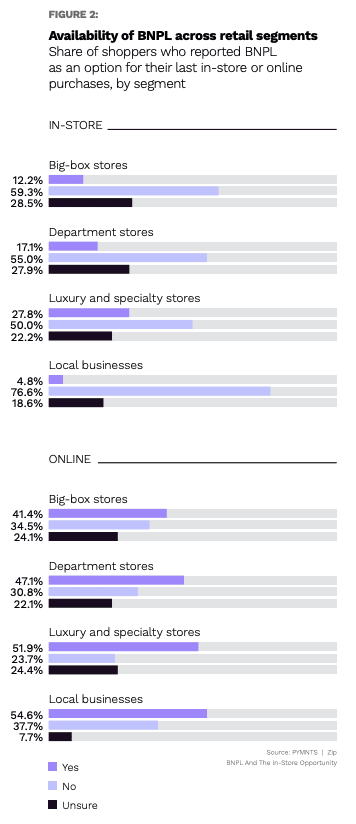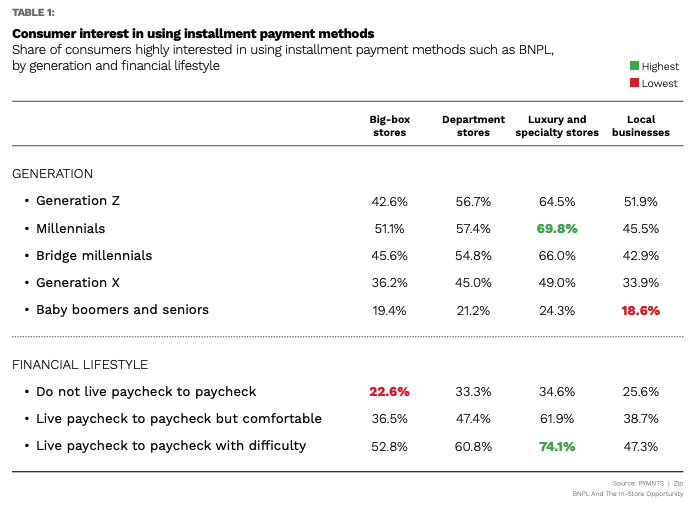
Consumers are much more likely to use buy now, pay later (BNPL) when making purchases online than when shopping in physical stores.
That’s true across four retail segments, including big-box stores, department stores, luxury and specialty stores, and local businesses, according to “BNPL And The In-Store Opportunity,” a PYMNTS and Zip collaboration that surveyed 2,025 U.S. consumers.
Get the report: BNPL And The In-Store Opportunity
Consumers’ comparatively minimal in-store BNPL use boils down to availability.
BNPL was offered for roughly half of consumers’ most recent online purchases across retail segments but available for less than one-fifth of in-store purchases.
The most dramatic gap in BNPL’s availability was for consumers making purchases from local businesses. The survey found that 55% of local businesses offered BNPL online, while just 5% offered the method in-store.
The smallest availability gap was observed among consumers shopping at luxury and specialty stores, with BNPL offered for 52% of their most recent online purchases and 28% of their in-store purchases.
 Despite the gap in availability, consumers’ interest in installment payments was about the same for both online and in-store purchases. Across all four retail segments, the shares of online and in-store shoppers who were highly interested in using installment payment methods such as BNPL were roughly equal.
Despite the gap in availability, consumers’ interest in installment payments was about the same for both online and in-store purchases. Across all four retail segments, the shares of online and in-store shoppers who were highly interested in using installment payment methods such as BNPL were roughly equal.
Installment payment plans such as BNPL appeared to be especially appealing to certain demographics, namely consumers from younger generations. The younger three generations — bridge millennials, millennials and Generation Z — expressed the greatest interest in using installment payments across all four retail segments.
Consumers’ financial lifestyles also had a bearing on their interest in installment payments, with those living paycheck to paycheck expressing the greatest interest across all retail categories.
Fewer consumers in the other financial groups in the PYMNTS survey reported being highly interested in installment payments, but their shares nevertheless were sizeable.
